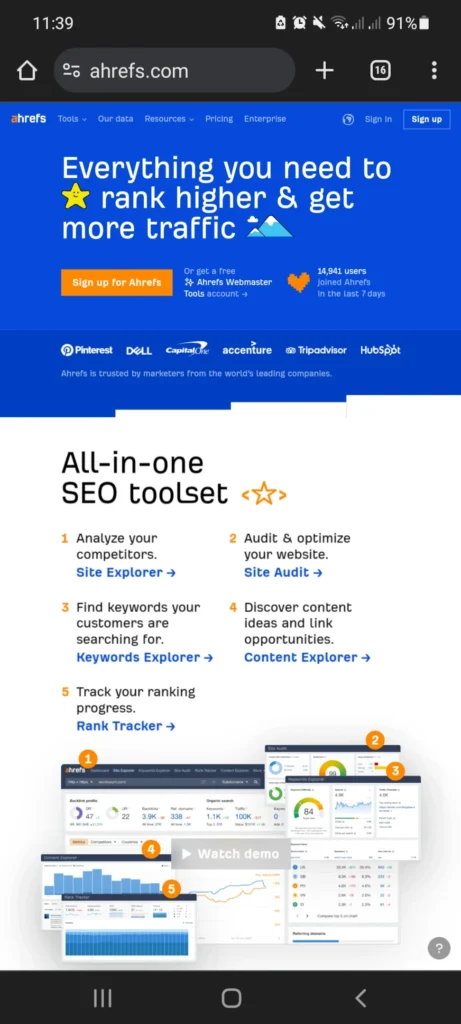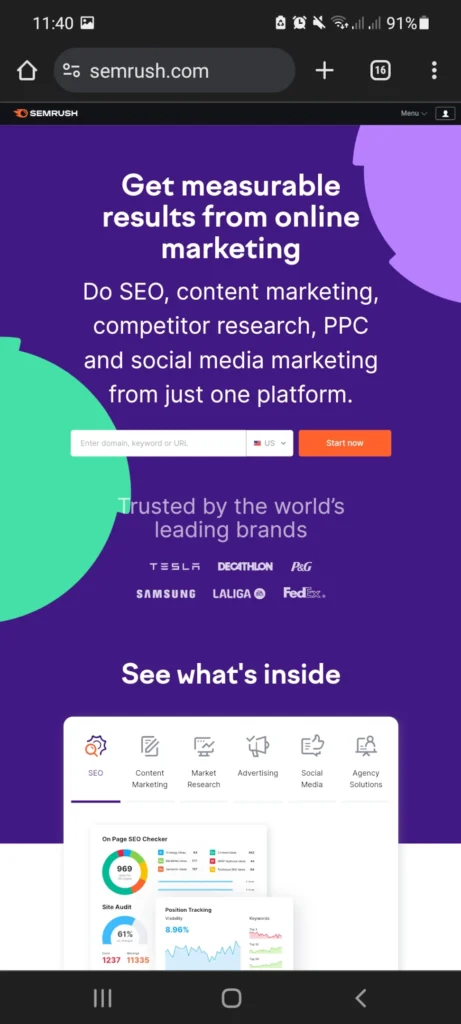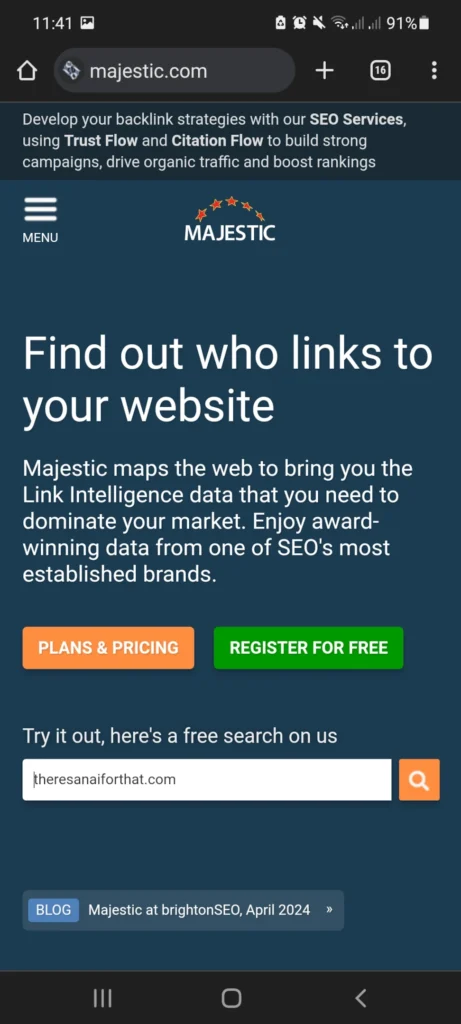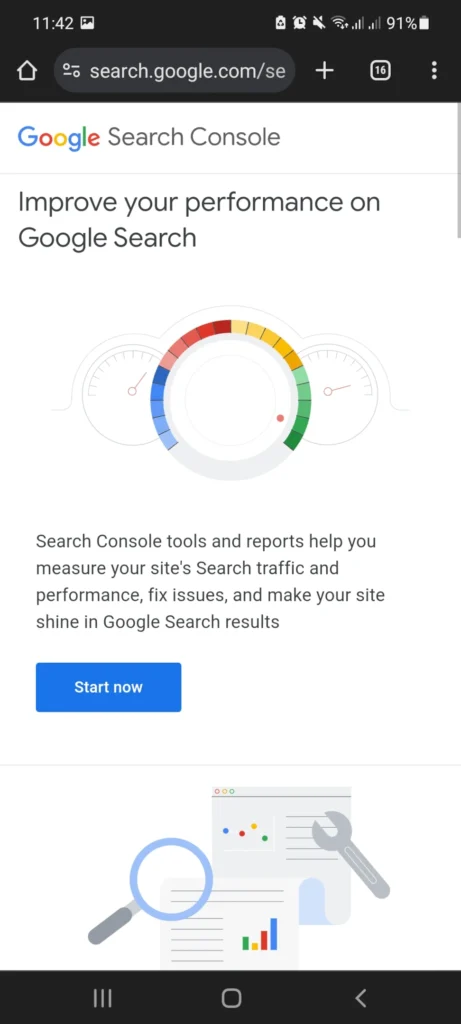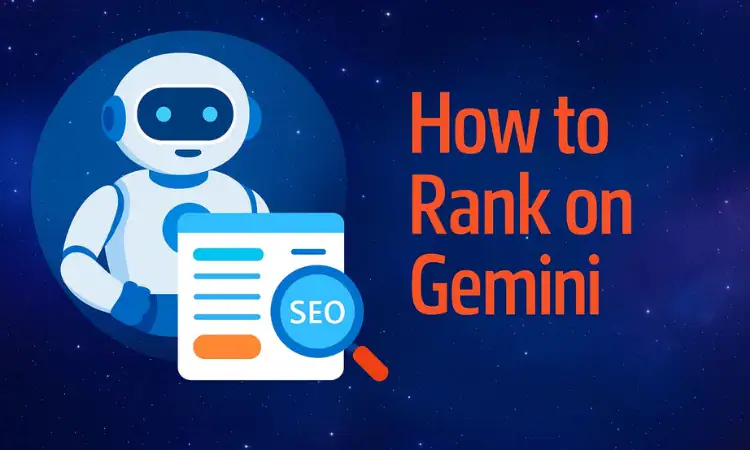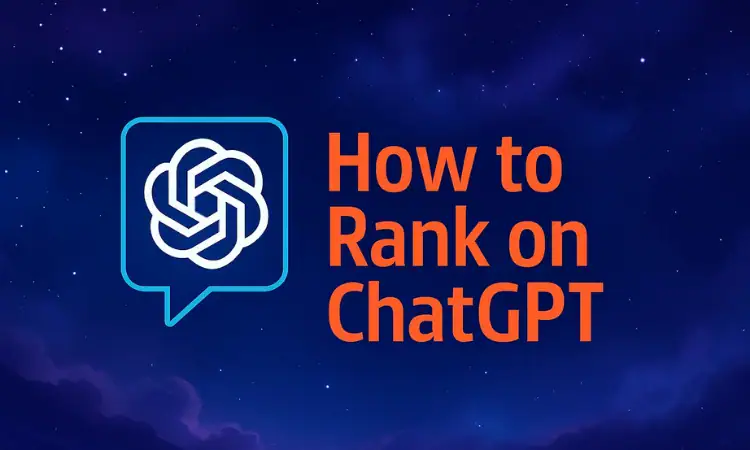Tiered link building is returning to the conversation among search engine optimization (SEO) experts, thanks to the evolving landscape shaped by Google’s latest updates.
This old-school SEO strategy, designed to create a pyramid of backlinks to enhance a site’s visibility, had taken a back seat due to stringent penalties on sketchy link practices.
However, as search engine algorithms grow smarter and emphasize quality and relevance, webmasters have taken a fresh look at how tiered link building could align with modern SEO demands.
The Origins of the Tiered Link-Building Strategy
Link building in tiers is an SEO tactic that includes making a hierarchy of backlinks leading to one website. The fundamental idea is to create a structure with many layers, each enhancing the link value of the layer above it.
At first, tiered links were seen as a solid method to boost page rankings. This plan included constructing many layers of backlinks, where first-tier links pointing directly toward a site were backed up by numerous second-tier links directed toward the tier 1 links.
What is Tiered Link Building?
The top layer, known as the first tier, links directly to the main website. Second-tier links further reinforce these top links and possibly more tiers, boosting the power and credibility of primary connections.
This strategy was extensively used in the past because it increased the authority given to a central site and helped improve its position on search engine results pages (SERP). People used many layers to protect the main site from low-quality links.
The goal was to increase traffic to the leading authoritative websites, making each link more potent because of the expanded backlink profile. However, the landscape has significantly shifted due to Google algorithm updates.
The Penguin update in 2012 was particularly pivotal. It targeted websites using manipulative link schemes, deceptive low-quality links, spammy automated link-building tools, and aggressive tiered link-building tactics. As recently as late 2023, Google has been releasing link-related updates.
This major shift transformed the approach to tiered link building, pushing SEO professionals toward more organic strategies emphasizing link quality over sheer volume.
Current Trends in Link Building
This emphasis on quality rather than quantity means links should come from trusted sources and make sense in their placement in content. The increase in content marketing has also impacted link-building. High-quality and helpful content now naturally earns links, promoting growth without artificial boosts.
Moreover, there is an increasing focus on the user’s experience. Tiered links offering genuine worth to the user are now regarded as more significant than other linking methods.
Internal Tiered Link Building
-
Understanding Internal Tiering of Links
Internal tiered link building is a strategic SEO method involving organizing internal tiered links to enhance topical relevance and domain authority across a website. This technique helps search engines discover and index web pages more effectively, potentially improving their ranking in search results.
The practice prioritizes the quality and strategic placement of links within a domain rather than just the quantity, aiming to distribute authority from one page to another through a planned linking structure. This method directs traffic and boosts the visibility and impact of critical pages within the domain. Unlike traditional link building, which focuses on acquiring external backlinks, internal tiered link building manages links between pages under the same domain to strengthen internal SEO.
This controlled approach ensures more systematic and targeted navigation through the site, enhancing the likelihood of effectively achieving desired outcomes.
-
The Link Relevancy Pyramid
The “link relevancy pyramid” is important in internal tiered link building. This method indicates arranging content like a pyramid or triangle, beginning with broad subjects and moving toward narrower ones.
At the bottom level, you could have general pages about wide-ranging topics that connect to deeper detailed pages, thus creating a vital funnel that leads to precise content at the top-most tier. This arrangement aids in creating a distinct topical depth and improves user interaction by offering systematic advancement via associated content.
-
Example of an Internal Link Pyramid
Imagine a website that deals with veteran issues and legal services. Generally, a typical page might offer basic information and guidance on “how to file a VA claim.”
Using internal links, users can move from this initial point to more specific pages, such as “side effects of exposure to contaminated water on military bases,” which explore particular problems related to the starting subject.
At the top of the pyramid, we might have a very focused page, like “Camp LeJeune water contamination lawsuit.” This could provide more detailed content about one case and specific legal advice. It may also include information on searching for legal representation regarding this issue.
This structure cleverly leads users and search engine crawlers from general topics toward more specific ones by using carefully placed links.
How Google’s Updates Affect SEO?
-
Emphasis on Content Quality
Google’s algorithm, especially in its latest changes, gives more weight to content quality.
These changes are centered on ensuring the highest-ranking content is truly valuable to users, thus pushing marketers to concentrate on the substance and helpfulness of their material instead of just optimizing for search engine visibility.
This change has brought a new focus on the quality of content in link building. The reasoning is simple: better content gets more natural backlinks because other sites are more inclined to link to helpful and respected information.
Hence, other SEO strategies require a strong content plan highlighting depth, correctness, and user involvement to encourage organic link gathering. This reduces the power of deceptive link-building methods.
-
Changes in Link Valuation
In earlier times, it was a matter of quantity over quality for links: more links meant better results. However, with the recent updates to Google’s search engine algorithm, the importance has shifted toward the value of each link.
The focus is now on links from trusted sites with high authority, which should be related to your niche. This adjustment aimed to lessen the importance of spammy link-building tactics and promote connections that represent genuine trust and influence.
The changes in link valuation also impact the evolution of tiered link building. It is no longer about making many layers of links to manipulate search engine rankings. Still, the strategy focuses on each layer, giving value and importance to the overall content strategy.
For instance, second-tier links should still come from good sources that improve the power of the Tier 1 links they support—not just serve to increase page rank.
Tiered Link Building’s Resurgence
-
Enhanced Control Over Link Juice Distribution
The idea of “link juice” is about how much ranking power or equity gets transferred from one page to the next through hyperlinks. It is a crucial element in SEO, as it aids in deciding a page’s strength and position among search engine outcomes. Link building by tiers might offer an organized approach for handling and enhancing the spread of link juice within a website.
In an excellent tiered link-building strategy, the main aim is to increase the movement of link juice from less important or outer content pages toward more crucial and valuable ones. These are often cornerstone or pillar content pages (like the main service page). For example, a secondary tier could have detailed blog posts or articles linking back to a primary tier, like a significant product category page.
Every link needs planning. This helps make key pages more visible and improves ranking by allowing the link juice to flow upward.
Implementing Tiered Link Building Effectively
-
Identifying High-Quality Link Sources and Avoiding Low-Quality Links
You must first find good sources to make a tiered link-building plan. Find authoritative websites related to your business niche with high content quality standards.
These should possess powerful domain authority, as high authority indicates they can pass on helpful link equity. Sources include reputable industry blogs, news outlets, educational institutions, and professional organizations.
-
Criteria for Quality Assessment
Relevance
The source must match your content so the connections seem normal and helpful for readers.
Authority
Use SEO tools to check the domain authority or other similar metrics. These tools help confirm the source has a good reputation and strength.
Traffic
The preferable sources are those with high organic traffic, as they demonstrate ongoing interest and trustworthiness.
Content Quality
Expect the content to be excellent, presenting articles that are thoroughly investigated, well-written, and full of knowledge.
-
Structuring Link Tiers Strategically
Regarding external tiered link building, you can use other websites to establish numerous backlinks to your main site. Every layer should be carefully designed to direct link juice upward toward your primary content pages.
The first tier could encompass links from direct industry-related sources that tend to be the most authoritative. Although they have less domain authority, blogs, blog comments, or smaller target sites could provide valuable and appropriate content for subsequent tiers.
-
Building an External Link Pyramid
To build a tiered link-building pyramid structure, you first need to get the top-quality and most appropriate links straight on your main pages. These are what we call tier-one links.
Following that, the tier-two links should support these primary ones by linking to pages from tier one while also getting linked from sources like personal blog links, guest posts, or forums found in third-tier links.
Each level should strategically support the level above it, funneling more focused authority upward.
-
Example of an External Link Tiering Strategy
Visualize a central website that sells items beneficial for the environment. The best backlinks could be from popular environmental blogs or green news websites (first-tier links).
These sites may be supported by smaller, specialized green lifestyle blogs (second-tier links), which might have links from local pages, blog comments, and forums of environmental groups (third-tier links).
This arrangement provides a slow and balanced increase in power, improving the main site’s importance and position.
-
Determining the Number of Tiers
The number of tiers needed depends on your aims and the niche’s width. Two to three tiers are usually enough for most campaigns. However, more intricate sites that aim for very competitive keyword rankings might benefit from extra layers.
-
Balancing Link Types across Tiers
It is essential to balance various link types throughout the tiers. Remember to use both do-follow and no-follow links to maintain an organic backlink profile.
The links inside your site should match external backlinks, forming a complete structure of links that supports user movement and improves SEO throughout the website.
Detailed Explanation of Tiered Link Building
Technical Explanation of How Tiered Link Building Works
-
Tier 1
This is the tier nearest to your main website. The links in Tier 1 are of the highest quality and are most relevant to your website content. Mainstream news websites, popular blogs, or recognized influencers in your field are included in your industry’s Tier 1 direct links.
-
Tier 2
These links point to tier-one links to help increase the latter’s authority. A second-tier link could come from smaller blogs, forums, or high-authority websites less famous than tier 1 but still have significance and credibility.
-
Tier 3
This tier backs up tier 2 links and usually involves even less famous or lower-authority sites. Third-tier links can be new blogs, guest posts on other sites, specific topic forums, or community websites. The emphasis is more on quantity for tier 3 links as we seek to widen the pyramid base to increase support for tier 2 links.
-
Optional Extra Layers
Based on the range and objectives of your SEO plan, you might consider including more layers after tier 3 links. Every extra tier intends to improve the link juice that gets pushed up, but it usually decreases in quality and increases in quantity.
Comparison with Other Link-Building Strategies
Tiered Link Building
Tiered link building involves creating multiple layers of links, where a first-tier link points directly to your main website, and subsequent tiers link to the first-tier link, strengthening the quality and perceived value of the first tier links. This strategy serves to pass link juice to the main site, potentially increasing its authority and search rankings.
- Benefits: Maximizes the SEO value of links by funneling authority through multiple layers, enhancing the impact on your leading site.
- Unique Aspects: Allows control over the link environment, as you can build out and strengthen layers of links as needed.
Guest Posts
A guest post involves writing an article for other websites and inserting links back to your website. It’s a popular method for gaining high-quality backlinks, increasing brand exposure, and reaching a broader audience.
- Benefits: Directly acquires backlinks from new audiences and reputable sites, which can drive traffic and improve domain authority.
- Unique Aspects: A good guest post strengthens relationships within the industry and can generate direct referral traffic from high-authority websites.
Private Blog Networks (PBNs)
Private Blog Networks (PBNs) consist of multiple websites or blogs set up or acquired to generate dofollow links to a primary site.
- Benefits: Provides immediate control over the backlink profile, allowing for rapid adjustments and targeted anchor text usage.
- Unique Aspects: High-risk strategy due to non-compliance with search guidelines, potentially leading to penalties if detected.
Organic Link Acquisition
Organic link acquisition involves earning links naturally without direct intervention. This happens when other websites link to your content because they find it valuable, authoritative, or helpful.
- Benefits: Builds genuine authority and lasting SEO benefits, as links are naturally given due to content quality or utility.
- Unique Aspects: Acquiring links involves no direct cost, and it enhances credibility with search engines and users.
Google’s Algorithm Updates in More Detail
-
Specific Updates Relevant to Link Building
Google has introduced many important algorithm updates that have changed the link-building environment over the years. The Penguin Update, initially launched in 2012, is one of these crucial changes.
This update focused on websites trying to influence search rankings by using too many link schemes, such as unnatural links, spammy links, or those gained through manipulative methods.
-
Implications for Tiered Link Building
The Penguin update changed how site owners built tiered links. It became more critical that backlinks, even those in lower tiers, were high-quality and organic.
Websites must now ensure their backlink profiles on all levels contain applicable, high-quality links that enhance user experience instead of being solely for SEO purposes.
-
Expert Opinions on Recent Updates
SEO expert Neil Patel emphasizes the importance of securing high-quality links from reputable sources. He states, “What Google is doing is adapting its algorithm to more closely align with the mission of showing the sites first that users love the most.”
Meanwhile, Moz CEO Rand Fishkin argues that link-building should seamlessly integrate with broader marketing efforts. He advises, “I see the world of SEO continues to be focused and even reliant on links in many ways, but not on the tactics we’ve used to acquire them in the past. So I think that link earning is going to replace link building.”
Risks and Rewards in the Current SEO Landscape
Risk of Google Penalties
Penalties are part of Google’s continuous actions to ensure what affects search engine rankings is beneficial for users, emphasizing quality and connection rather than manipulative methods.
Examples of Penalizable Actions
-
Low-Quality Backlinks
Participating in link exchanges with low-quality websites unrelated to your content can lead to Google penalties.
-
Excessive Link Exchanges or Reciprocal Linking
It is expected to have some link exchange, but when there are too many reciprocal links, this seems unnatural and manipulative.
-
Buying Links
Google’s Webmaster Guidelines clearly prohibit buying backlinks and can result in significant penalties.
-
Over-Optimized Anchor Text
Employing excessively optimized anchor text on all tiers might look like manipulation to Google and could result in penalties.
SEO Benefits of a Well-Executed Strategy
-
Enhanced Site Authority
If you place primary backlinks in a way that supports each other, more traffic will be directed toward your main pages. This action helps to increase their authority and position within search outcomes.
-
Increased Referral Traffic
Good-tiered link building from important and related places can bring much-focused referral traffic to your website, making it more visible and boosting conversions and sales.
-
Increases Keyword Range
An organized link-building strategy in a tiered structure helps you rank for more keywords, from those with high competition to longer and more specific phrases.
-
More Brand Attention and Familiarity
Your site will gain more attention by appearing in search results using various top-notch links. This helps people become familiar with and trust your brand.
Best Practices for Compliance and Success
Adhering to Google’s Webmaster Guidelines
These rules are meant to keep search results fair and effective by discouraging manipulative actions and promoting a focus on good content quality and usefulness for users.
Compliance means ensuring your link building does not unintentionally damage your site’s reputation with Google but rather assists in increasing its visibility for searches.
Continuous Strategy Monitoring and Adjustment
By regularly monitoring, you can understand which parts of your strategy work best and what areas might need changes or improvement. This method keeps you ahead of the competition by confirming that your SEO tactics are still suitable and match the market environment.
Tools for Link and Impact Analysis
-
Ahrefs
This tool allows SEO professionals to monitor and analyze inbound links and assess their quality and relevance, making it invaluable for optimizing link profiles and uncovering link opportunities.
-
SEMrush
SEMrush helps identify where competitors are gaining their links and the effectiveness of their tactics, providing a strategic advantage in planning and improving one’s own link acquisition efforts.
-
Majestic
Majestic specializes in link analysis, offering detailed insights into how websites link to one another with metrics like Trust Flow and Citation Flow.
-
Google Search Console
Google Search Console provides valuable data on how Google views your website, including the status of your external and internal links. It helps track the performance of your links and their impact on your SEO efforts, allowing for timely adjustments.
Frequency of Strategy Reviews
How often you should review your strategy can depend on various factors. The size of your operations may influence it, as may the competitiveness of your field and any recent alterations to search algorithms.
However, as a general rule, reviewing your link-building strategy every three months is good. This regularity lets you adjust to notable shifts in the industry, including fresh recommendations for success, and react to what your analytics uncover.
Conclusion
To sum up, link building in tiers is still a complex but powerful method in SEO, especially when it is adjusted to meet modern requirements for quality and compliance from search engines such as Google.










